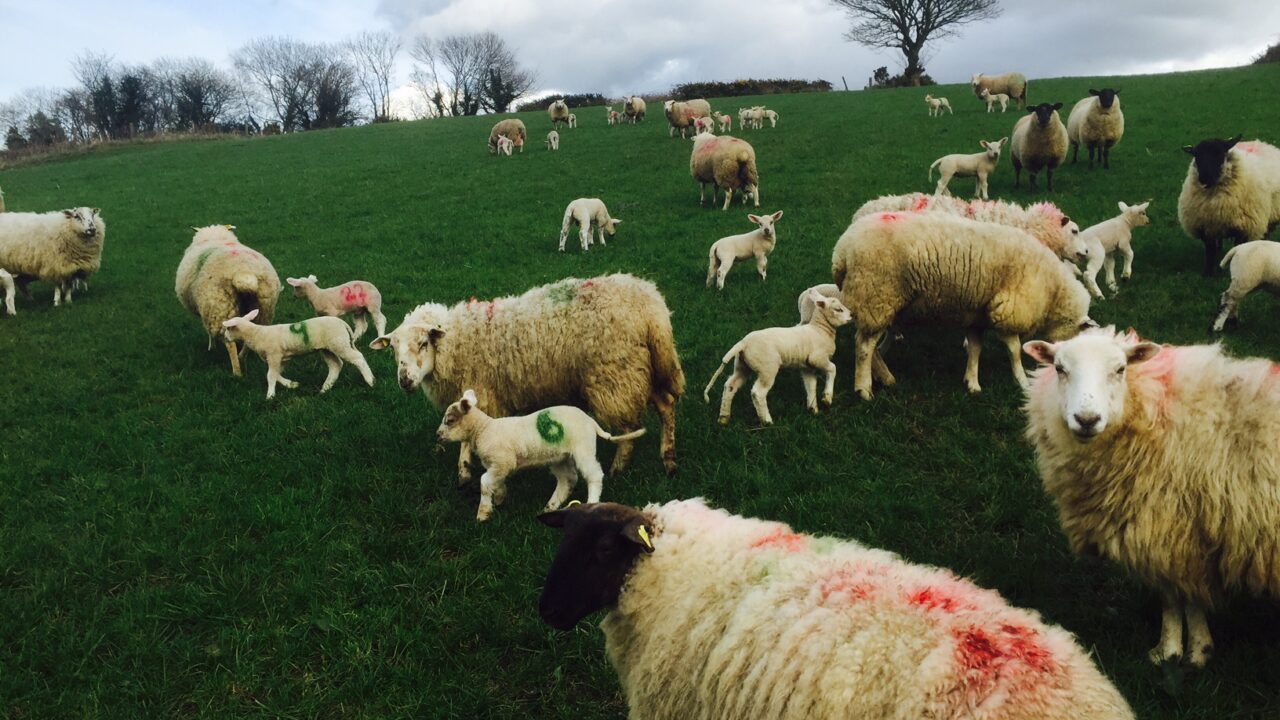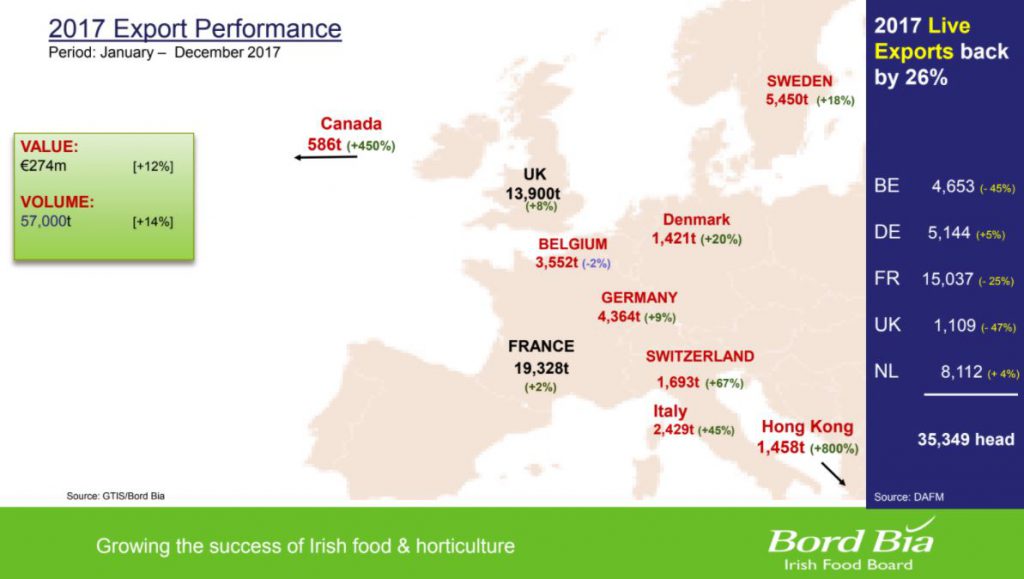The volume and value of Irish sheepmeat exports grew by 14% and 12% respectively in 2017, according to Bord Bia’s Declan Fennell.
Speaking at yesterday’s Meat Market Seminar, which was organised by Bord Bia, Fennell said that some 57,000t of Irish sheepmeat was exported last year – an increase of 12% on year earlier levels.
“In 2017, sheepmeat exports were up by 12% to €274 million. Market diversification, which has been quite evident in recent years, has continued.
“45% of our exports are now going outside of our two core markets, which are the UK and France,” he said.
Despite the challenges of sterling fluctuations, Fennell added that Irish sheepmeat exports to the UK increased by 8% last year. This was primarily due to less New Zealand lamb being available on the market.
Other growth markets of note include; Denmark (+20%); Sweden (+18%); Hong Kong (+800%); and Canada (+450%).
Farm-gate prices drop
Despite the positivity surrounding the value and volume of exports, Irish sheep prices actually declined by 5c/kg last year to reach an average of 477c/kg.
Much of this relates to the carryover of hoggets from 2016, which resulted in the Irish sheep kill reaching a 10-year high. Over the entire year, hogget throughput jumped by 18% or 125,000 head.
However, from May to December, Irish sheep prices did improve above the previous five-year average. Between May and December, Irish sheep prices stood at 484c/kg – 17c/kg higher than the previous five-year average.
Current factory prices
The positivity surrounding sheep prices in the final eight months of 2017 appears to have continued on into this year.
Irish Farmers’ Association’s (IFA’s) John Lynskey said lamb prices have kicked on again this week and factories are paying 515c/kg; some butchers and wholesalers are paying a top price of 520c/kg.
Demand, he said, remains very strong due to a full sell-out over the Christmas holidays and the poor weather of late, which has left factories short of stock.
The IFA sheep chairman added: “The large weekly kills in the latter half of 2017 will leave lamb numbers tight in the early part of 2018.”


